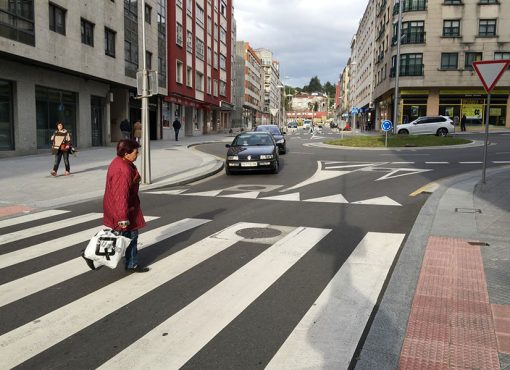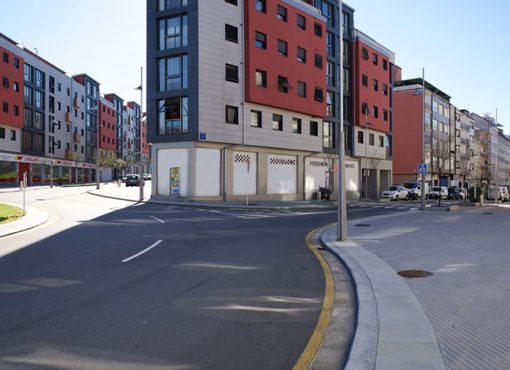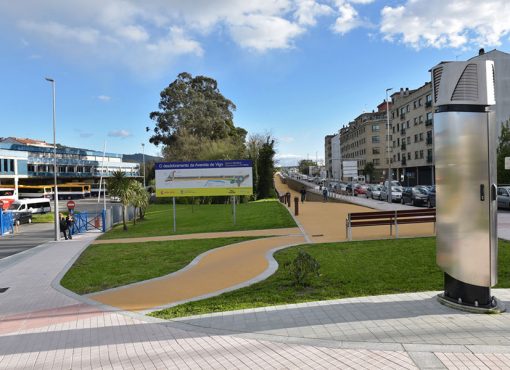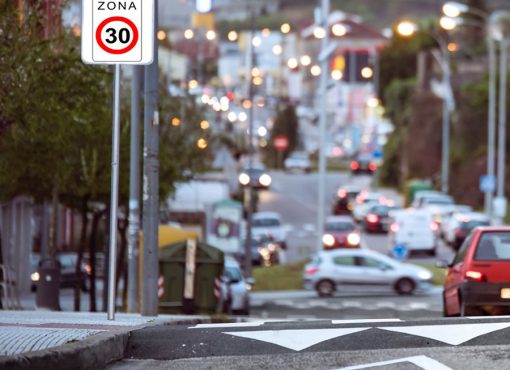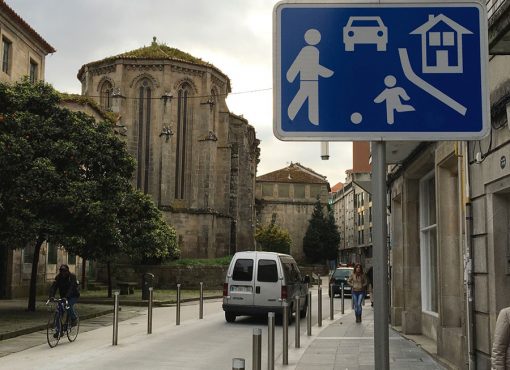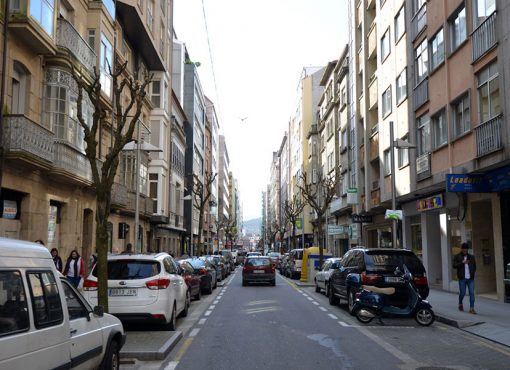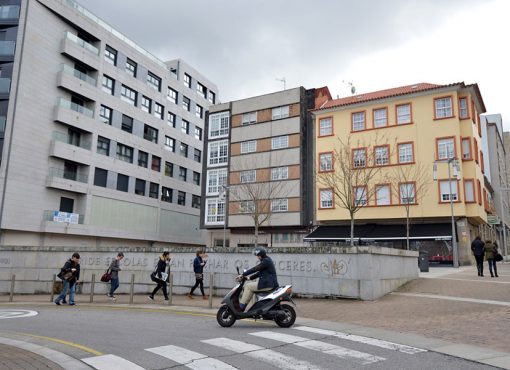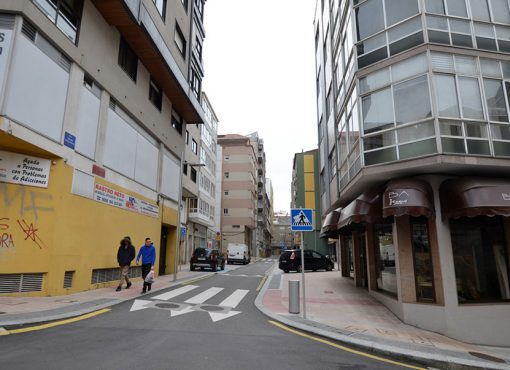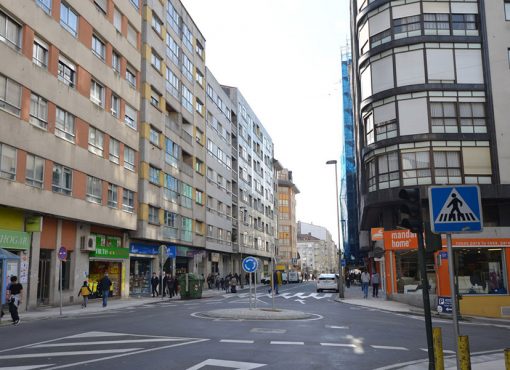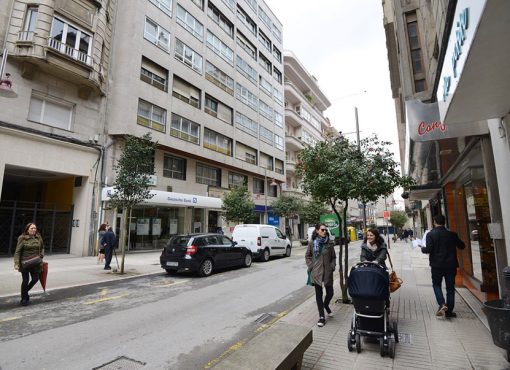Back in 2011, Pontevedra was the first city in Spain to enforce a 30 km/h speed limit throughout the entirety of its urban territory, a measure that had been announced in the 2009 municipal ordinance on the use of public spaces.
Several key areas, which deserve special protection from the potential dangers derived from motorized traffic, have top speeds of 20 km/h. For the most part, these are school environments, outdoor play areas or high-density pedestrianized neighborhoods.
Life-saving speed bumps and roundabouts
Normative measures are complemented with additional infrastructures:
- More than 230 protected pedestrian crossings. Frequently referred to as “speed bumps”, they allow for the design of single platform streets, give continuity to the sidewalk and tell drivers that it is them who are invading pedestrian space, and not the other way around.
- A total of 35 roundabouts with different radii were built at key points of the inner ring. These were considered traffic management elements at intersections whose aim was to reduce top speeds in those areas where an intervention was urgently needed.
- Most streets in the city have recently been reformed following strict criteria to prevent motorized vehicle aggression and encourage safe driving. To this end, vehicle lane width was reduced to the bare minimum.
Better speed management
When the speed limit was set at 50 km/h, the average speed of private cars circulating in the city was 11.49 km/h. Today, with the new urban mobility model (top speeds of 30 km/h citywide, traffic density reductions, traffic calming measures, etc.), average speeds are considerably higher, having reached 20.83 km/h.
Also in rural areas
The rural road network, which is also dependent on the municipality, follows the exact same general guidelines as in urban spaces: top speeds of 30 km/h and the inclusion of life-saving speed bumps to encourage safe driving. With the introduction of traffic calming measures in semi-rural and rural areas, the objective of bringing accident figures down to zero may be accomplished presently.
Stopping road violence
This set of traffic calming policies goes towards combatting road violence and road rage phenomena. The consequences of an accident caused by a car driving at 30 km/h are much less severe than at higher speeds (50 or 70 km/h).


